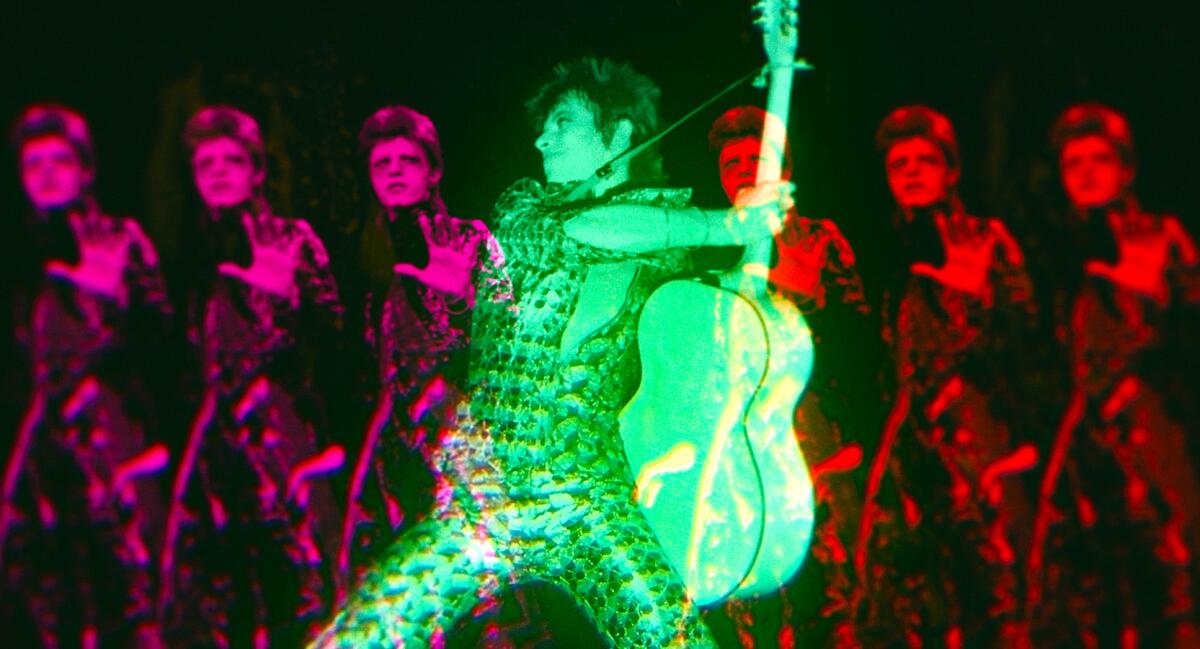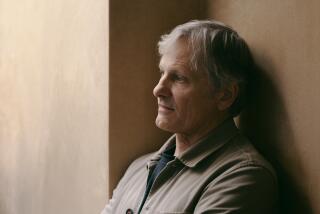Review: David Bowieâs own sound and vision propel psychedelic âMoonage Daydreamâ

Liberated from the narrative conventions that plague most biographical documentaries, âMoonage Daydreamâ lures us into a cosmic dance of intoxicating imagery and timeless music in honor of the late shapeshifting, gender-defying, rock philosopher David Bowie.
Amid psychedelic splashes of color, pristine concert footage and an assortment of filmic references, director and editor Brett Morgen distills the essence of the nearly messianic figure whose disruptively ravishing art continues to puzzle and inspire into a vertiginous stream of conciseness. Audio from multiple interviews he granted over the decades underscores the free-flowing footage to let Ziggy Stardust speak for himself.
For your safety
The Times is committed to reviewing theatrical film releases during the COVID-19 pandemic. Because moviegoing carries risks during this time, we remind readers to follow health and safety guidelines as outlined by the CDC and local health officials.
Unconcerned with providing a rigid timeline of events, the filmmakerâs sole marker for the passage of time comes from Bowieâs own mentions of his age and the relevant creative or personal transitions at each stage. By age 33, the British-born intergalactic artist had succeeded at a plethora of disciplines including painting, sculpture and even film acting as an extraterrestrial inside a human body in Nicolas Roegâs âThe Man Who Fell to Earth.â
Likewise, there are no experts or contemporaries featured to contextualize Bowieâs legacy. And yet, through the firsthand insight interspersed between mood-altering tracks such as âHeroesâ or âSound + Vision,â we witness Bowieâs innermost evolution. Although he openly discusses his estranged relationship with his mother, reinventing his musical language alongside collaborator Brian Eno and becoming a curious globe wanderer, itâs the eventual change in his stance on romantic love that most concretely humanizes him.
In combining performances of the same song recorded years apart, âMoonage Daydream,â also the name of one of Bowieâs early releases, glides across time and space positioning the icon as an entity that remained just as captivating throughout his mortal existence.
Morgenâs structural approach to Bowieâs history is akin to his take on the troubled mindset of Nirvana front man Kurt Cobain in âMontage of Heck,â except for the use of talking-head interviews. Both are monuments to singular psyches that demanded the filmmaker dive into intimate ideas and public memories to mold them into a compelling visual vessel.
Wielding chaos into cinema â rather than creating an accumulation of factoids and anecdotes told by those who knew the performer â Morgen manifests a sensorial invocation of Bowieâs spirit, suited to delight acolytes and nonbelievers alike, for a tribute worthy of his unclassifiable genius.
âMoonage Daydreamâ
Rated: PG-13, for some sexual images/nudity, brief strong language and smoking
Running time: 2 hours, 14 minutes
Playing: Starts Sept. 16 in general release
More to Read
Only good movies
Get the Indie Focus newsletter, Mark Olsen's weekly guide to the world of cinema.
You may occasionally receive promotional content from the Los Angeles Times.










